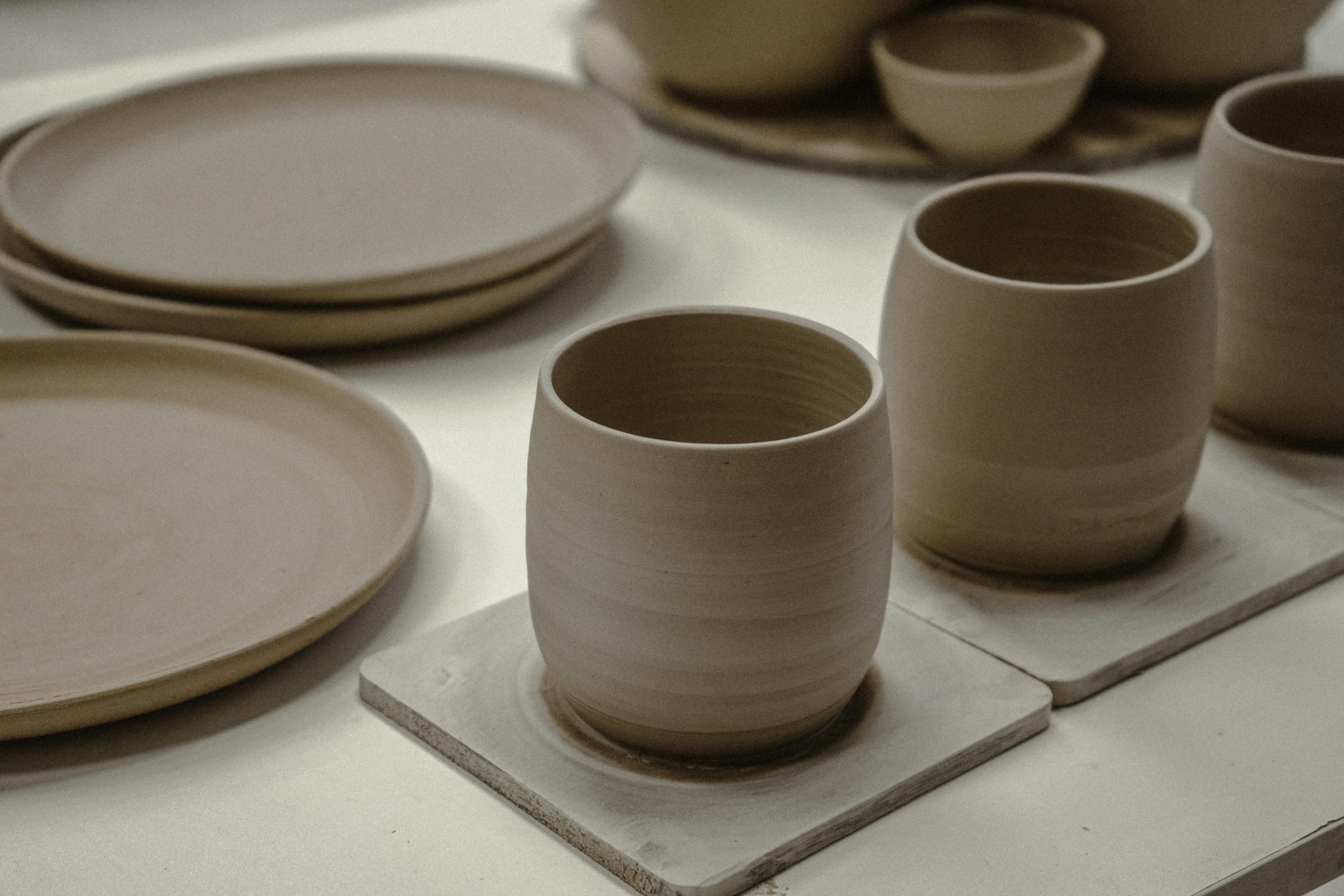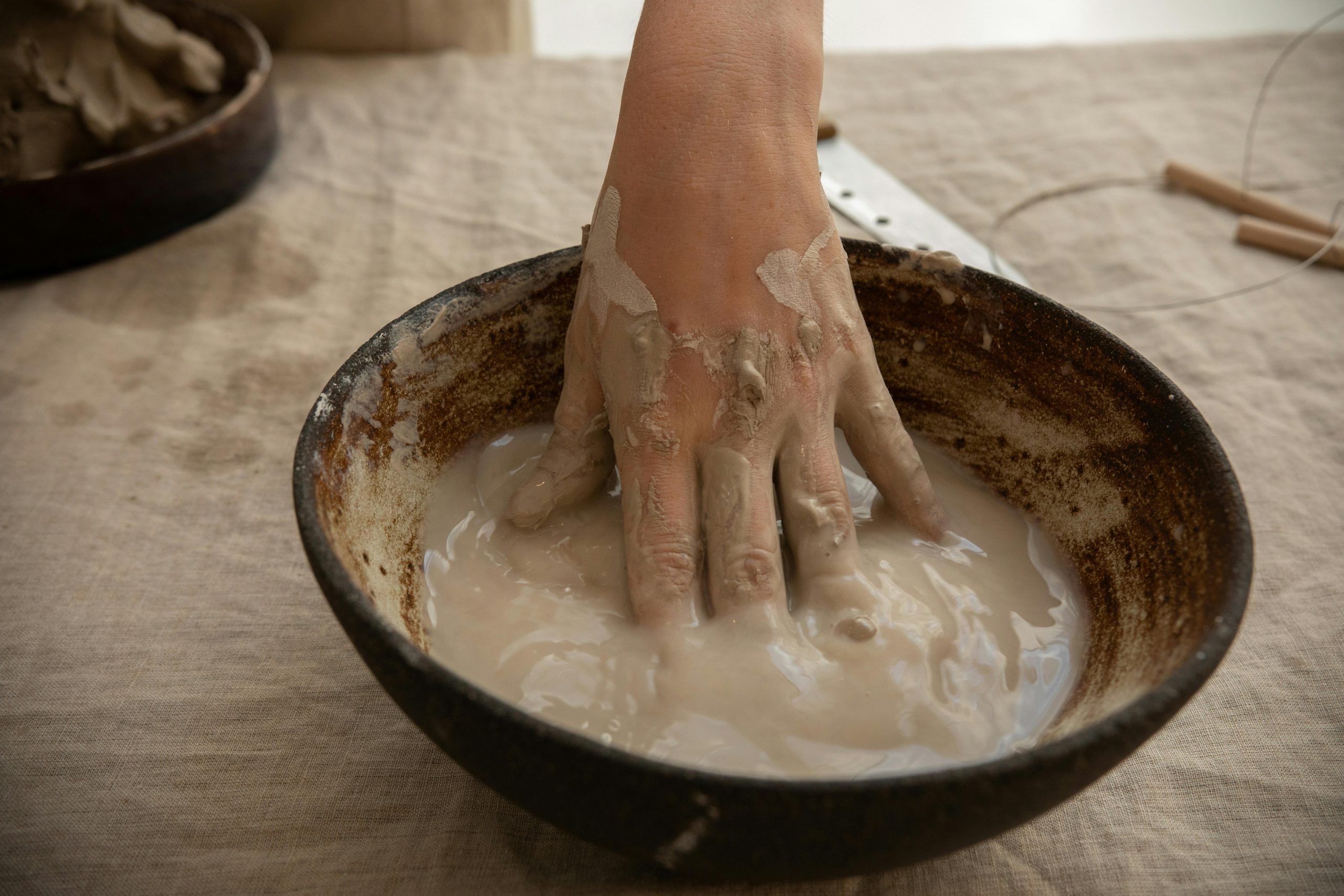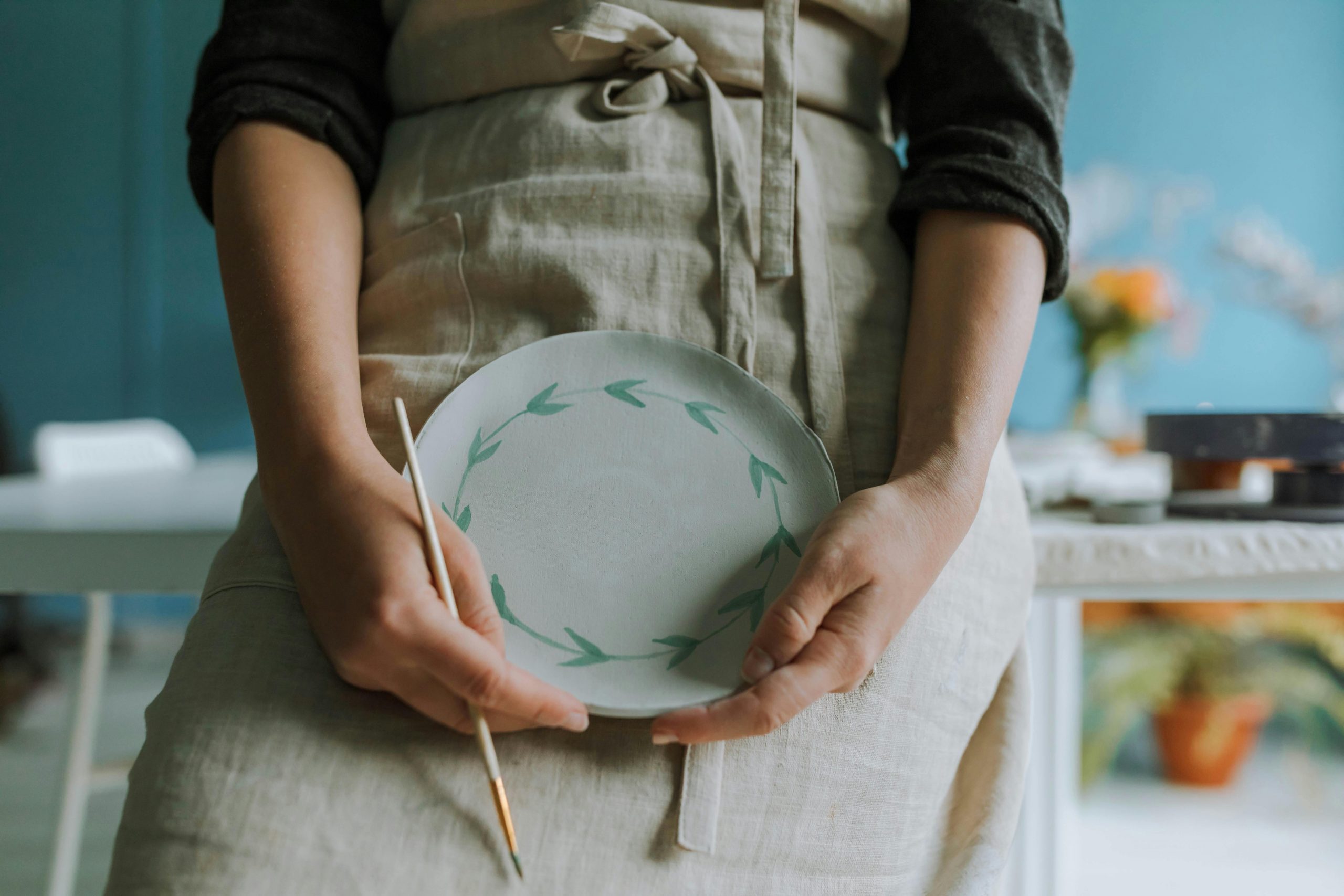Our pottery courses are run from our studio in Barcelona, the capital of Catalunya, a place with a long history of creativity and innovation in the world of ceramics. However, since the autumn of 2020, this region has faced a significant challenge, experiencing the worst drought on record, which has sparked conversations about sustainability across various industries. The scarcity of water resources has led lots of ceramicists and studios to reconsider our practices, searching for ways to continue teaching and creating while minimising our environmental impact.
So in this blogpost we’ll be looking at how pottery and sustainability intersect, exploring how potters can make their practice more eco-friendly without impacting their practice too much. Here are five actionable tips for potters, ceramics students and studios:
How to make your pottery courses more sustainable
1. Fire selectively
Firing selectively is probably one of the most eco-friendly practices you can engage in as a potter, and before it’s fired clay is endlessly recyclable. Our pottery courses are all about building your skills and refining your technique as a potter, and obviously lots of practice is essential.

However, not every pot you make needs to be fired. We encourage our students to ask themselves: Does this piece need to exist in the world? Of course it’s frustrating to recycle a pot you’ve been working on – but by firing selectively and recycling pieces that are less than perfect, you can lessen the environmental impact of your practice.
Once you’ve got your perfect piece, it’s time to fire. Firing is a crucial step in the pottery-making process, but it also consumes substantial energy. The students on our pottery courses are understandably keen to have their pieces fired as quickly as possible, but part of our sustainable practice is firing selectively. Instead of firing small batches frequently, we wait until we have a full kiln-load of pots. This not only saves energy but also ensures that each firing is maximised.
2. Recycle clay
Clay is the raw material of pottery, and its production can have a significant environmental impact. To minimise waste, we recycle every scrap of clay we can during our pottery courses, recycling pieces that go wrong at the throwing stage, collecting scraps from trimming or carving pieces and rehydrating it into workable material again. We have several plaster bats around the studio to enable our coworkers to recycle their clay, and we reuse all the clay from discarded pieces during our intensive pottery courses, where students are throwing for six hours a day (you can imagine there are a lot of discarded pieces!) This process reduces our consumption of new clay as much as possible, which not only lowers our studio’s environmental impact but also saves on costs!
So, if you want to reduce your consumption, consider setting up a clay recycling system in your studio. This can involve creating a designated area for collecting and reprocessing clay scraps. By implementing this system, you not only contribute to sustainability but also foster a culture of resourcefulness in your studio.
3. Use “dirty” water
In pottery, water is a precious resource, especially in regions experiencing droughts like Catalunya. One simple yet effective tip is to use “dirty” water for tasks that don’t require clean water. For instance, when moistening clay, cleaning your tools or preparing slip, there is no need to use clean water. You can use water that has already been used once. This way, you extend the usefulness of water before it is discarded.

For example, at the end of our pottery classes, our students are responsible for cleaning their tools and the wheel they’ve been using of all excess clay. However, the first clean can be done with the water they’ve been using to throw with. Afterwards, a quick wipe with a dampened cloth should suffice for the final clean.
Additionally, you can try to minimise the amount of water you use for throwing. Every little helps – and the bonus of throwing with less water means less mess to clean up at the end of your pottery class!
4. Use sustainable materials for postage and packaging
Our commitment to sustainability extends beyond the studio to how we package and ship our students’ creations. Of course, our continuous students take their pieces home themselves, but for students who’ve travelled to take our week-long or weekend intensive pottery courses, we’re happy to ship their pieces once they’ve dried and been glazed and fired by our studio assistants.
We opt for eco-friendly packaging as far as possible, using materials such as recycled cardboard, paper, or biodegradable peanuts, and avoiding plastic whenever possible, as it contributes to pollution and environmental degradation. We also use the minimal packaging that will still ensure the safety of students’ pieces, as excess packaging not only wastes materials but also increases the environmental impact of shipping.
5. Make pieces that you want to use and keep
Creating, using and appreciating handmade ceramics in your everyday life is a way of resisting a culture of mindless consumerism. Unlike mass-produced items, handmade pottery encourages a deeper connection with the objects we use on a daily basis. Whether you’re making your own pieces, or investing in the work of a ceramicist, you’re opting for one-off, handmade items, reducing the cycle of constant consumption and disposal.

Choosing to make and use your own ceramic pieces promotes a more sustainable mindset, centred around mindful consumption and appreciation for the beauty of craftsmanship. And ceramics are both hard wearing and long lasting – so make sure you donate any unwanted pieces to a charity or secondhand shop for someone else to take home and enjoy.
Towards a sustainable pottery practice
In the world of ceramics, sustainability is not just a trend but a responsibility. As potters, we’re literally creating pots from the earth under our feet. So it’s important to respect the environment and conserve resources while engaging in your creative practice. The five eco-friendly tips discussed that we apply in our pottery courses – firing selectively, recycling clay, using “dirty” water, choosing sustainable packaging, and making pieces with intention – are actionable steps that can be integrated into any pottery practice.

